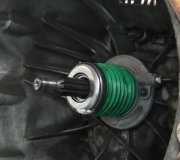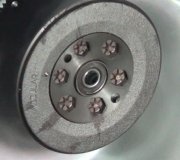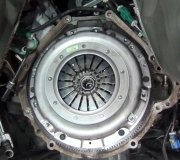If the hydraulics are working, at least you know that there is not a leak, then there has to be a problem with the clutch itself.
You can double check the hydraulkics at the clutch arm in some vehicles. If the clutch arm comes out of the side of the transmission you should be able to pull a boot out of the way to see if the slave cylinder is moving the pushrod and moving the clucth arm. If this all works, then all that is left is the clucth.
If it is being pushed in and not actuated or gives little to no resistance the pressure plate is probably bad. Either the fingers are broken off, or even just a few will do it, or the clamping springs have failed.
You neeed to replace the entire clutch, pressure plate, throwout bearing and pilot bearing together and all new. They will usually come offered this way by good manufacturers.
If the flywheel has any ridges or galling, it might need to be replaced. Newer and especially high performance flywheels are made so thin that they are too thin to re-surface. This has become true of brake rotors as well. The rreason is to save gas.
Having a lighter flywheel allows the motor to spin up faster. It also frees up some power. A new flywheeel won't be cheap but some companies offer them as part of a clutch package in really high end stuff. There is a company called Fidanza that makes a flywheel with a replaceable clutch surface and it is very lightweight. So, you will never have to pay more than $50 for a new surface, which is probably less than re-surfacing an old flywheel.
Saturday, February 18th, 2012 AT 12:50 AM


